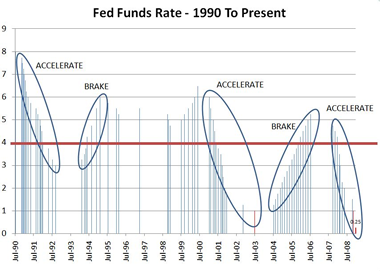Global Warming Heats Up
SEARCH BLOG: GLOBAL WARMING
Then there were two rounds of Climategate and "hide the decline." [image from www.wattsupwiththat.com]
 Now there are "global warming dirty tricks" document forgeries. [image from the Heartland Institute]
Now there are "global warming dirty tricks" document forgeries. [image from the Heartland Institute]There is a pattern here to the global warming debate... on the activist side.
On one side are the environmental activists who have strong quasi-religious beliefs... that they hold the scientific truth with regard to climate knowledge because... that's what their computer models tell them.
That reminds me of my youth when I went to Sunday School and all the four-year olds would sing, "Jesus loves me this I know, for the Bible tells me so." Of course, we were four-year olds and had no idea who Jesus was and what the Bible was other than a black book. Now the grown-up version is, "Warming harms me this I know, for the models tell me so." All this with a vague understanding of what's in the computer models and who the master programmers are... and what the real implications of warming or cooling are.This side is well-funded and politically ensconced. It sees the ends... to "control" the climate... justifies the means... massive spending and regulation and outright lying.
******
On the other side are so-called "skeptics." These are climate scientists, physicists, meteorologists, and other well-educated people who say "not so fast... nothing is ever as simple as it first seems." These people want a scientific assessment of data and models, not a political pronouncement.
One organization dedicated to the scientific inquiry of climate dynamics is the Heartland Institute. It's funding is private through contributions... no feeding off the government trough... and minuscule compared with the activists. It became the target of activists because of their frustration with Heartland's refusal to accept... unconditionally... the political science of global warming and simplistic models based on CO2 as the primary factor affecting climate rather than the actual scientific study of all of the possible factors... including influences deemed "minor" by activists... such as the sun and clouds and ocean currents and land use [deforestation, farming, urbanization, etc.].Why refuse to accept the so-called IPCC "consensus" projections? Well, those models have problems; large problems... not the least of which may be using data that doesn't reflect the real world [as shown in the video above]. And the result is the IPCC projections have problems; large problems.
As The Wall Street Journal pointed out:
In this respect, an important gauge of scientific expertise is the ability to make successful predictions. When predictions fail, we say the theory is "falsified" and we should look for the reasons for the failure. Shown in the nearby graph is the measured annual temperature of the earth since 1989, just before the first report of the Intergovernmental Panel on Climate Change (IPCC). Also shown are the projections of the likely increase of temperature, as published in the Summaries of each of the four IPCC reports, the first in the year 1990 and the last in the year 2007.
From the graph it appears that the projections exaggerate, substantially, the response of the earth's temperature to CO2 which increased by about 11% from 1989 through 2011. Furthermore, when one examines the historical temperature record throughout the 20th century and into the 21st, the data strongly suggest a much lower CO2 effect than almost all models calculate.Actually, "it appears that the projections exaggerate" is an understatement of the problem for the activists. The real issue is that there has been no warming for more than a decade. That does not compute... at least in the way that alarmist models compute.
******
But just to put this in further perspective, we should note that the chart above is comparing projected versus actual temperature variations from long term mean [average]. Since the models used for projections are highly bound to changes in CO2, the IPCC projections are expected.
Joe D'Aleo, a meteorologist and executive director of the ICECAP site, provided the chart below that shows the actual relationship between atmospheric CO2 [right scale - parts per million] and global average temperature variation [left scale - 2 methods].
The relationship between the increase in atmospheric CO2 and global mean temperature variation from the long-term average over the past decade is approximately... zero. In other words: other stuff happens.
For further discussion about the differences between the UAH and GISS temperature metrics, CLICK HERE. That's another story of data manipulation, intrigue, and discovery.
So, when models do not compute, what is left is lying, falsification, and obfuscation.
RELATED:












